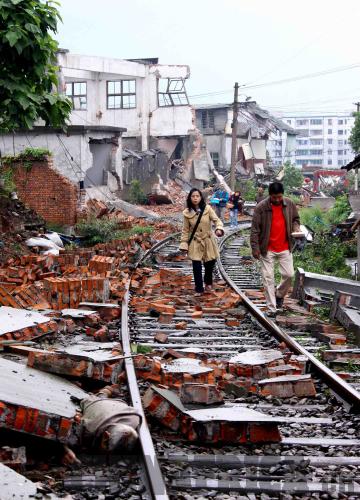|

On September 19 of the same year, the State Council, China's Central Government, formally launched a three-year overall plan for post-earthquake restoration and reconstruction in the affected areas. The plan, with an estimated cost of 1 trillion yuan ($152.9 billion), became one of the largest recovery projects in the world.
Three years later, as the project wraps up, Wenchuan is in the spotlight again, an example of stunning change created through a Chinese model of disaster relief.
All-out assistance
The rubble and tents disappeared, to be replaced by new buildings and widened roads across the region. One is amazed by the speed of physical and economic recovery of Wenchuan.
As early as August 2009, 16 schools with seismic resistance capability to absorb quakes up to a magnitude of 8.0 were completed and put in use with the help of aid partner Guangdong Province. The 14,000 Wenchuan children who had been sent to various places across the country to continue schooling after the quake were able to return to their hometown. By May 2010, 2,800 Wenchuan families had moved into the new, seismic resistant homes in the Sunshine Homes Community, another project assisted by Guangdong. The Qiang style housing also marks the completion of all 333 projects stemming from the earthquake.
"Not only in Wenchuan, but most projects concerning people's livelihoods in affected regions finished roughly two years after the earthquake," said Qin Bin, Director of the Emergency Coordination and Security Division of the Economic Construction Department, the Ministry of Finance. "This is of great credit to the strong financial and technical support received."
|